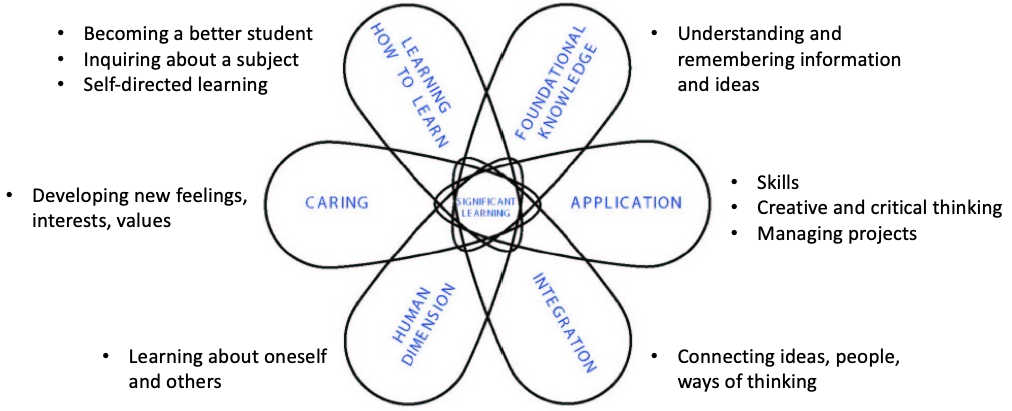How to implement
Backward design is called "backward" because it involves first thinking about what students will be able to do at the end of the course or lesson (goals and objectives), and then thinking about assessments and instructional activities.

Learning Goals
Traditionally, the first step in course design for many faculty may be to create a list of subject matter topics for a syllabus. Backward design starts with the learning goals for the course, instead of the subject matter. The learning goals for a course can relate to the subject-area knowledge, and can also involve skills, attitudes, behaviors, and values (L. Dee Fink, 2003)

Sample Learning Goals:
- Example 1: Understand the relationships among DNA, chromosomes, genes, cells, and organisms.
- Example 2: Communicate ideas effectively in writing.
- Example 3: Develop a greater appreciation for how scientific knowledge is generated.
- Example 4: Independently learn more about something you are curious about.
- Example 5: Evaluate an experimental design
- Example 6: Build a scientific argument
Learning Objectives
Learning goals lead to learning objectives - what students do to demonstrate that they have achieved the learning goals. Each learning objective includes a clear, measurable action verb and specific conditions under which the student will perform the action. Bloom's taxonomy classifies learning into six categories and highlights some action verbs that can be helpful when writing learning objectives.
Sample Learning Objectives:
- Example 1: Students will be able to draw and label a diagram to show howDNA, chromosomes, genes, cells, and organisms are related.
- Example 2: Students will be able to design an experiment to measure a dependent variable as a function of one or two independent variables.
- Example 3: Students will be able to describe how the periodic table is arranged with respect to atomic numbers and chemical properties.
Assessments
Assessments are the evidence that students have achieved the objectives. Assessments may be used for many reasons, including to:
- allow students to practice
- provide feedback to students on their learning progress
- give information to faculty about what students have (or have not) learned
- assign grades
For more information on types of assessment and grading fairly, visit the page on Assessment.
Instructional Activities
After objectives and assessments are defined, it is time to design activities that students will do in and out of class to achieve the objectives. The activities can be before-class readings or lectures, in-class worksheets, homework assignments, or other experiences during which students practice the desired performance (e.g., analyzing datasets, solving problems, making predictions justified with background reading, etc.) and get feedback from instructors, teaching assistants, peers, or automated systems.
Alignment (in progress)

















